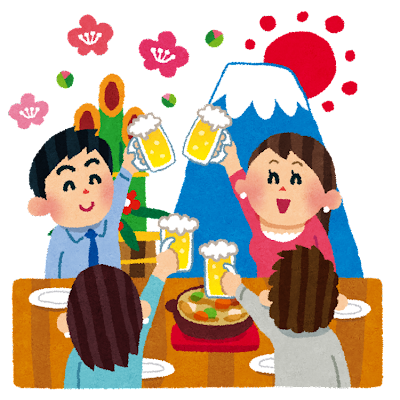Japanese New Year traditon Overview
Oshogatsu is a Japanese New Year tradition that has been going on for centuries.
It’s time for families to get together and celebrate the beginning of the new year.
The New Year is also a time to reflect on the past year and set goals for the new year.
History of Oshogatsu

The history of Oshogatsu dates back to the 8th century.
At that time, the New Year was celebrated with a festival called “Hanami”.
During Hanami, people gather to see plum blossoms. Ume is a symbol of spring in Japan.
In the 12th century, a new custom called “Oshogatsu” was born.
Oshogatsu is a combination of the words “press” and “moon.” New Year is the time to make a new start and set goals for the year, so it came to be called “Oshogatsu”.
Oshogatsu is generally held from December 31st to January 3rd.
“Omisoka” New Year’s Eve Tradition
Toshikoshi Soba

On New Year’s Eve, families get together and have a special meal called Toshikoshisoba.
Toshikoshi soba is a custom that began in the Edo period in Japan, and it is believed that eating soba will bring good luck in the New Year.
Traditionally in Japan, families would gather on New Year’s Eve to eat raw soba noodles, and each person would make a wish before eating.
The idea behind this practice is to purify the mind and body. With its strong aroma and sharp taste, soba is believed to bring spiritual clarity.
In addition, the thin and long shape of soba noodles is believed to bring longevity.
Joya no Kane
Another New Year Eve’s Tradition is “Joyanokane”.
What is the “New Year’s Eve Bell”, a traditional Japanese culture?
The meaning of the Japanese New Year’s bell is deeply rooted in ancient Shinto.
Ringing the bell at the beginning of the new year is believed to purify negative energy and bring good luck.
It begins on New Year’s Eve and sometimes lasts until New Year’s dawn. It is held all over Japan and is held at any shrine. Participants take turns ringing bells at shrines and temples to celebrate the beginning of the new year and bring in positive energy.
It is said that the sound of this bell contains a message to pray for the peace and safety of all elements of the natural world, including family, home, nature, and gods.

How To Spend New Year Day in Japanese Tradition

New Year’s is usually spent with family.
Many people visit shrines and temples to pray for happiness and good health in the new year. Others visit family and friends. Some people spend their time watching TV or playing games.
Oshogatsu is a time when people gather to celebrate the beginning of the new year.
It’s time to reflect on the past year and set goals for the new year. The New Year is a special time to deepen family ties and create lifelong memories.



